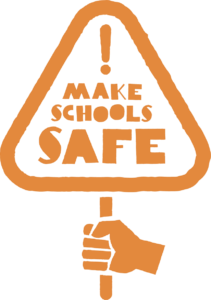
We all want our children to feel safe at school.
This is important, not only for their emotional wellbeing but because their feelings of safety have an impact on their capacity to learn and be successful at school.
School safety is defined as schools and school-related activities where students are safe from violence, bullying, harassment, and substance use. Student perceptions of safety affect their academic achievement. When students feel safe, they are better able to focus on learning, which in turn leads to increased academic achievement.
Going to a school that does not feel safe can have long-term effects on the psychological and physical health of a student.
Research advances in neuroscience, social science, and education are showing us how these threats affect the health, learning, and educational outcomes of students. When we feel endangered, the body reacts by producing a flood of adrenaline and cortisol, provoking the fight-or-flight reaction. When the feeling of threat is constant, the resulting toxic stress affects physical health, brain development, and learning. When activated over the long-term without adequate social buffering, it can cause lasting damage. After extended periods of activation, the reactive system may have difficulty shutting itself off, leading to an increased risk of chronic health problems and significant changes in the brain that negatively impact learning.

So what is a safe school?
A safe school is:
- where expectations for behaviour are clearly communicated;
- where teaching and learning are not distracted;
- where disruptions are minimised;
- where violence, drugs, bullying and fear are not present;
- where students are not discriminated against;
- where consequences for infractions are fairly applied.

A safe school is not one without challenges, it is one where:
- students understand the rules, structures, supports and expectations;
- success has many different faces;
- hard work and talent combine;
- challenges are part of the growth and education process;
- resilience is developed through the experiences of success and failure;
- trust is a key part of the culture;
- there is an alignment between home and school;
- the physical space is welcoming.
Teachers play a key role in developing a classroom environment conducive to learning that entails staging the physical space, getting the students to cooperate, creating a communal environment, and finally maintaining a positive classroom climate and culture.
Terry Muldoon
School Principal

